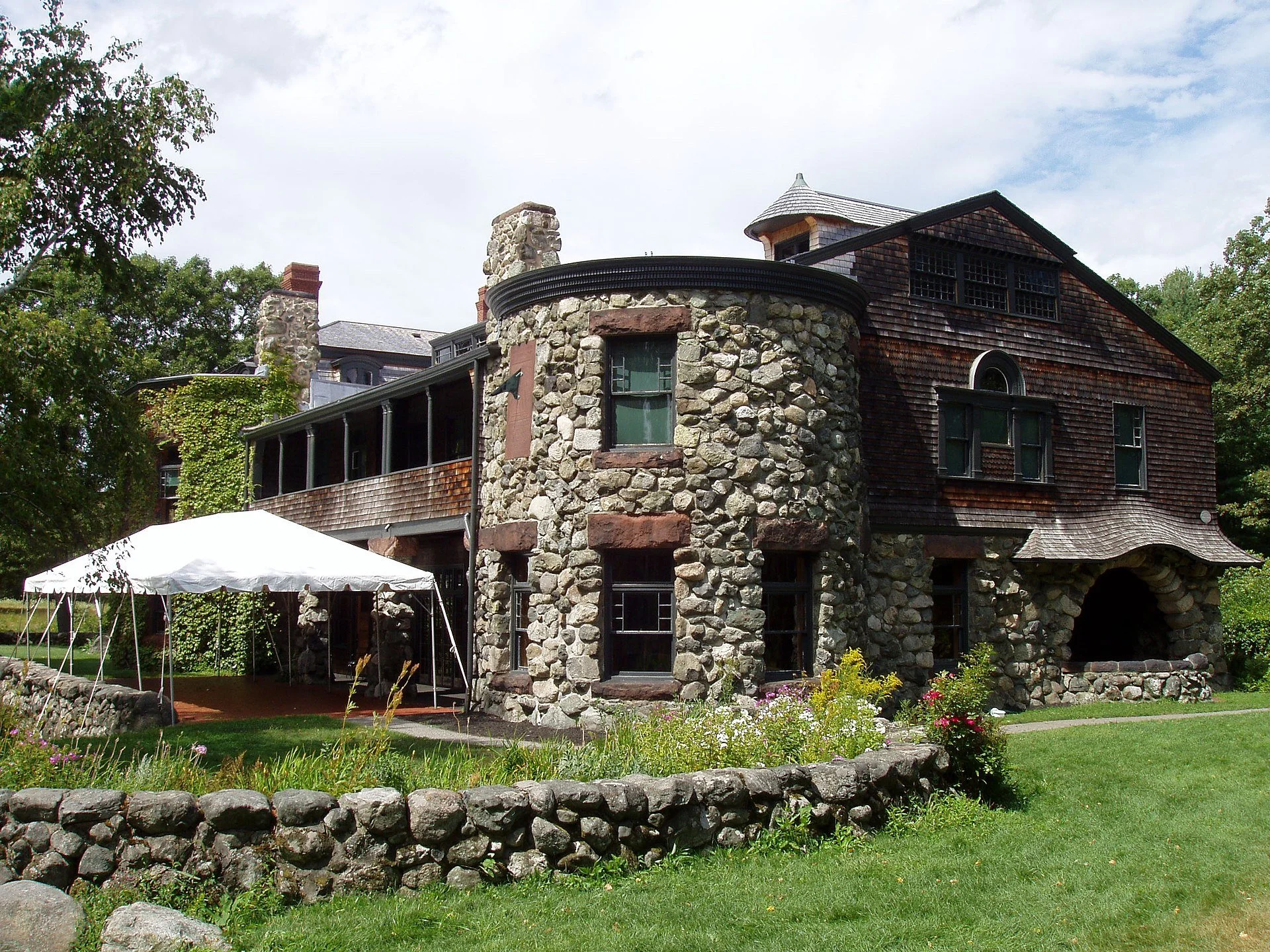
‘Education ought to work outdoors’
On Mt. Mansfield, Vermont’s highest peak.
— Photo by Famartin
View from the patio at the Robert Treat Paine estate, called Stonehurst, in Waltham, Mass. The estate, now a museum, was created through the collaboration of famed building architect Henry Hobson Richardson and celebrated landscape architect Frederick Law Olmsted.
— Photo by NewtonCourt
“Whoever owns the real estate and its constituents , the explorer owns the landscape.’’
—- John R. Stilgoe (born 1949) , historian and photographer who is the Robert and Lois Orchard Professor in the History of Landscape at the Visual and Environmental Studies Department of Harvard University. This quote is from his book Outside Lies Magic
He says:
“Education ought to work outdoors, in the rain and the sleet, in the knife-like heat of a summertime Nebraska wheat field, along a half-abandoned railroad track on a dark autumn afternoon, on the North Atlantic in winter. All that I do is urge my students and my readers to look around, to realize how wonderfully rich is the built environment, even if the environment is only a lifeboat close-hauled in a chiaroscuro sea.’’
#landscape
Melding buildings and landscape
Henry Hobson Richardson’s famous Trinity Church (built 1872-1877) on Boston’s Copley Square.
Adapted from Robert Whitcomb’s “Digital Diary,’’ in GoLocal24.com
Many people have seen the great Gilded Age architect Henry Hobson Richardson’s (1838-1886) famous public and private buildings around America, with Boston’s grand Trinity Church still the most famous. Richardson invented a unique Romanesque Revival style with ingenious massing and use of stone, and he was also a pioneer in developing the remarkably modernist “Shingle Style” houses so popular in New England.
And yet while Richardson was very well known in his fairly short lifetime, few people now know his name, even though many historians consider him a founder of modern American architecture.
But Hugh Howard has come along to help rectify that with his duel biography Architects of an American Landscape: Henry Hobson Richardson, Frederick Law Olmsted, and the Reimagining of America’s Public and Private Spaces.
Olmsted (1822-1903), unlike Richardson, remains famous, as the co-designer of Central Park and designer of many other famous parks, such as those in Boston’s “Emerald Necklace,’’ across America. Many see him as the father of American landscape architecture.
Richardson and Olmsted, despite very different backgrounds and personalities, worked very closely on dozens of commissions for cooperative designs for parks, railroad stations, public libraries and houses. Their projects integrated the built and natural environments. Many of these collaborations resulted in Richardson’s buildings looking comfortably settled into Olmsted’s landscaping.
Olmsted said of Richardson:
“He was the greatest comfort and the most potent stimulus that has ever come into my artistic life.”
This is a terrific book, elegantly written. It would have even better with bigger and clearer pictures.
In Waltham, Mass.: “Stonehurst,’’ now a museum and built for Boston Brahmin lawyer Robert Treat Paine. Richardson designed the house and Olmsted the grounds, in close collaboration, in a project that took from 1883-1886.




